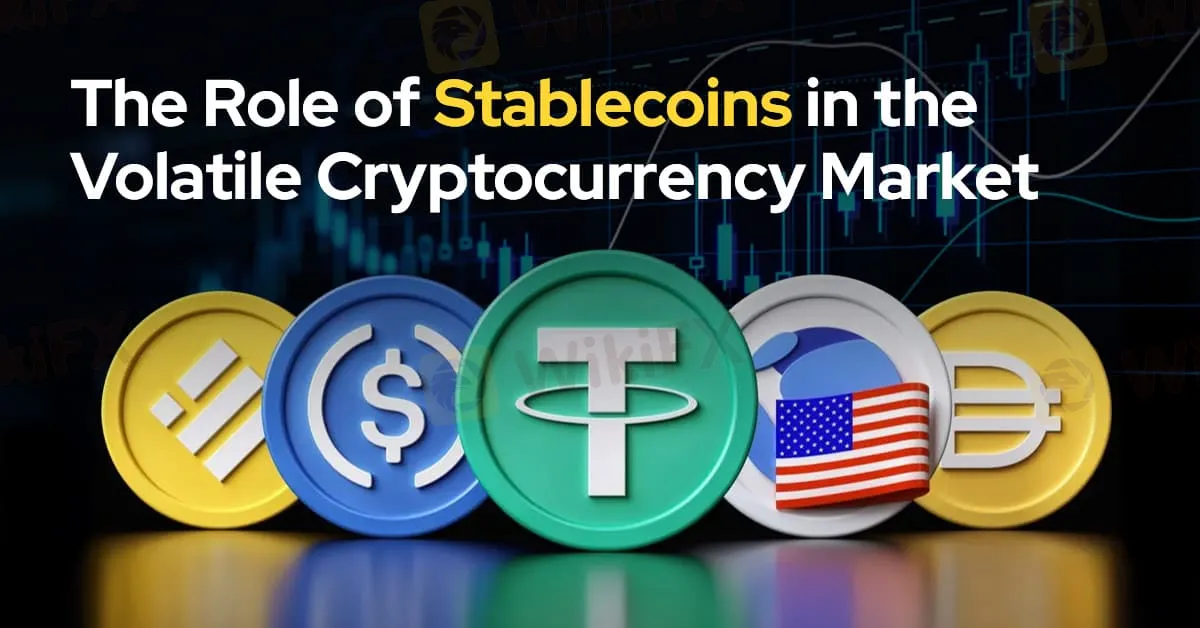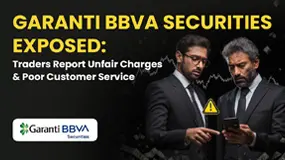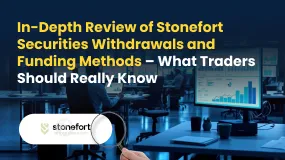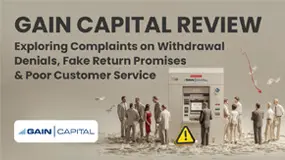简体中文
繁體中文
English
Pусский
日本語
ภาษาไทย
Tiếng Việt
Bahasa Indonesia
Español
हिन्दी
Filippiiniläinen
Français
Deutsch
Português
Türkçe
한국어
العربية
The Role of Stablecoins in the Volatile Cryptocurrency Market
Abstract:In this article, we’ll explore stablecoins, how they work, and why they play a crucial role in the volatile cryptocurrency market.

Introduction
The cryptocurrency market is known for its extreme volatility, with major digital assets like Bitcoin and Ethereum frequently experiencing large price swings within short time frames. This volatility presents opportunities and challenges for investors, businesses, and developers. In response, stablecoins have emerged as a solution to help stabilize the market, offering the benefits of cryptocurrencies without the same level of risk. In this article, well explore stablecoins, how they work, and why they play a crucial role in the volatile cryptocurrency market.
What Are Stablecoins?
Stablecoins are a type of cryptocurrency designed to maintain a stable value, typically pegged to a reserve asset such as the U.S. dollar, Euro, or a commodity like gold. Unlike traditional cryptocurrencies, whose prices are influenced by supply and demand dynamics, stablecoins are backed by assets that provide them with a consistent value.
Types of Stablecoins:
- Fiat-Collateralized Stablecoins
These stablecoins are backed by fiat currency reserves held by a central authority. Examples include Tether (USDT), USD Coin (USDC), and Binance USD (BUSD). Each token is pegged 1:1 to a fiat currency, such as the U.S. dollar, ensuring stability.
- Crypto-Collateralized Stablecoins
These stablecoins are backed by other cryptocurrencies, which helps maintain their value. For example, DAI is a popular crypto-collateralized stablecoin backed by Ethereum and other assets in the MakerDAO system. To account for potential volatility, they are typically over-collateralized.
- Algorithmic Stablecoins
Unlike fiat- or crypto-backed stablecoins, algorithmic stablecoins rely on smart contracts and algorithms to maintain their price. They automatically adjust the supply of the stablecoin to keep its value stable, as seen with projects like TerraUSD (UST) before its collapse, which highlighted the risks associated with this model.

Why Stablecoins Are Important in a Volatile Market
The cryptocurrency markets volatility can be both a benefit and a drawback. While price swings attract traders seeking profits, they also deter people and businesses looking for reliable means of exchange. Stablecoins address these issues in several ways:
- Providing Stability in Transactions
Stablecoins allow individuals and businesses to conduct transactions without worrying about price fluctuations. They are often used as a bridge currency between traditional finance and cryptocurrency, making it easy to send and receive payments in a reliable manner.
- Increasing Accessibility for Traders and Investors
Stablecoins act as a safe haven during periods of volatility, allowing traders to quickly convert their holdings into a stable asset without leaving the cryptocurrency ecosystem. This provides a way to “park” value temporarily while waiting for favorable market conditions.
- Facilitating Decentralized Finance (DeFi) Applications
Stablecoins are a cornerstone of the DeFi ecosystem, where they are used in lending, borrowing, and yield farming. The predictable value of stablecoins allows users to participate in DeFi without worrying about the impact of price fluctuations on their investments.
- Enabling Cross-Border Transactions
Stablecoins enable fast, low-cost cross-border payments, eliminating intermediaries and reducing fees. This is particularly beneficial for those in regions with limited access to banking services or in countries experiencing hyperinflation, as stablecoins provide an alternative store of value.
Stablecoins and Market Liquidity
Stablecoins play a significant role in adding liquidity to the cryptocurrency market. They act as an intermediary asset, allowing traders to move between volatile cryptocurrencies and a more stable option easily. This increased liquidity helps reduce market slippage, improves the efficiency of trades, and contributes to market stability.
Liquidity Providers in Crypto Exchanges:
Many centralized and decentralized exchanges use stablecoins like USDT or USDC as primary trading pairs for cryptocurrencies. This boosts liquidity and simplifies trading by providing a consistent reference point.
Access to Yield Generation:
Stablecoins also enable users to earn returns through DeFi platforms and interest-bearing accounts on exchanges, offering liquidity to DeFi applications while providing investors with a source of passive income.
Challenges and Risks Associated with Stablecoins
Despite their benefits, stablecoins come with challenges and risks, including regulatory scrutiny, collateral risks, and operational transparency.
- Regulatory Uncertainty
Governments and regulatory bodies are increasingly scrutinizing stablecoins due to their resemblance to traditional financial instruments. In the U.S., the SEC and other agencies are looking into ways to regulate stablecoins, which may impact their usage and development.
- Collateralization Risks
Fiat-backed stablecoins require the issuing companies to hold reserves in traditional banks or investments. There have been concerns about whether stablecoin issuers hold adequate reserves to back all circulating tokens. Transparency and regular audits are necessary to ensure that they are indeed “fully collateralized.”
- Algorithmic Stability Challenges
Algorithmic stablecoins are inherently riskier as they depend on maintaining demand through smart contracts and algorithms. The collapse of TerraUSD (UST) in 2022 highlighted the vulnerability of algorithmic models and their susceptibility to market manipulation.
- Counterparty and Custodial Risks
Stablecoins rely on custodians to hold reserves, and if the custodian fails or mishandles funds, it can destabilize the value of the stablecoin. Additionally, centralized stablecoins introduce counterparty risk, as holders depend on the issuing institutions solvency and integrity.
The Future of Stablecoins in the Cryptocurrency Market
As stablecoins grow in popularity, they are likely to evolve in response to regulatory developments, technological advancements, and changing market dynamics. Here are some potential trends to watch:
- Increased Regulation and Transparency Requirements
Regulatory frameworks may soon require stablecoin issuers to disclose more detailed information about their reserves and undergo regular audits, which could boost confidence in their stability and legitimacy.
- Integration with Central Bank Digital Currencies (CBDCs)
Some governments are exploring CBDCs as a way to modernize their financial systems. Stablecoins may find complementary roles alongside CBDCs, potentially acting as intermediaries between public and private sectors.
- Innovation in Algorithmic and Crypto-Collateralized Models
New algorithmic models are being developed to improve stability mechanisms, while crypto-collateralized stablecoins may increase their collateralization ratios to reduce risk. These innovations will continue to evolve in response to market demand.
- Use in Tokenized Assets and Smart Contracts
As blockchain adoption grows, stablecoins are likely to be used in tokenized assets, representing real-world assets on the blockchain, and smart contracts, facilitating automation and settlement in decentralized applications.
Conclusion
Stablecoins have proven essential in the volatile cryptocurrency market, offering stability, accessibility, and liquidity that traditional cryptocurrencies often lack. They are not without challenges, as regulatory scrutiny and operational risks remain key considerations. However, stablecoins are set to play a central role in the evolving cryptocurrency landscape, bridging the gap between volatile digital assets and the security of fiat currency. For traders, investors, and businesses, understanding the role of stablecoins provides valuable insights into how to navigate the broader crypto ecosystem safely and efficiently.

Disclaimer:
The views in this article only represent the author's personal views, and do not constitute investment advice on this platform. This platform does not guarantee the accuracy, completeness and timeliness of the information in the article, and will not be liable for any loss caused by the use of or reliance on the information in the article.
Read more

Garanti BBVA Securities Exposed: Traders Report Unfair Charges & Poor Customer Service
Have you been financially ruined through chargebacks allowed by Garanti BBVA Securities? Do you have to wait for hours to get your queries resolved by the broker’s customer support official? Did the same scenario prevail when you contact the officials in-person? Failed to close your account as Garanti BBVA Securities officials remained unresponsive to your calls? Many have expressed similar concerns while sharing the Garanti BBVA Securities review online. In this article, we have shared some complaints against the broker. Take a look!

In-Depth Review of Stonefort Securities Withdrawals and Funding Methods – What Traders Should Really
For any experienced forex and CFD trader, the mechanics of moving capital are as critical as the trading strategy itself. The efficiency, security, and transparency of a broker's funding procedures form the bedrock of a trustworthy, long-term trading relationship. A broker can offer the tightest spreads and the most advanced platform, but if depositing funds is cumbersome or withdrawing profits is a battle, all other advantages become moot. This review provides a data-driven examination of Stonefort Securities withdrawals and funding methods. We will dissect the available information on payment options, processing times, associated costs, and the real-world user experience. Our analysis is anchored primarily in data from the global broker regulatory inquiry platform, WikiFX, supplemented by a critical look at publicly available information to provide a comprehensive and unbiased perspective for traders evaluating this broker.

MH Markets Deposits and Withdrawals Overview: A Data-Driven Analysis for Traders
For any experienced trader, the integrity of a broker is not just measured by its spreads or platform stability, but by the efficiency and reliability of its financial plumbing. The ability to deposit and, more importantly, withdraw capital without friction is a cornerstone of trust. This review provides an in-depth, data-driven analysis of the MH Markets deposits and withdrawals overview, examining the entire fund management lifecycle—from funding methods and processing speeds to fees and potential obstacles. MH Markets, operating for 5-10 years under the name Mohicans Markets (Ltd), has established a global footprint. With a WikiFX score of 7.08/10, it positions itself as a multi-asset broker offering a range of account types and access to the popular MetaTrader platforms. However, for a discerning trader, the real test lies in the details of its payment systems and the security of their funds. This article dissects the MH Markets funding methods withdrawal experience, leveraging pr

GAIN Capital Review: Exploring Complaints on Withdrawal Denials, Fake Return Promises & More
Is your forex trading experience with GAIN Capital full of financial scams? Does the broker disallow you from withdrawing your funds, including profits? Have you been scammed under the guise of higher return promises by an official? Does the GAIN Capital forex broker not have an effective customer support service for your trading queries? Concerned by this, many traders have shared negative GAIN Capital reviews online. In this article, we have discussed some of them. Read on!
WikiFX Broker
Latest News
GCash Rolls Out Virtual US Account to Cut Forex Fees for Filipinos
WikiFX's New Evaluation of ATM Capital LTD: Does its License Protect the Arab Investor?
How a Fake Moomoo Ad Led to the “New Dream Voyage 5” Scam
Is Axi Legit? A Data-Driven Analysis of Its Regulatory Standing and Trader Feedback
Trive Investigation: High Score, Hidden Risk - The Profit Paradox
In-Depth Uniglobe Markets Commission Fees and Spreads Analysis – What Traders Should Really Know
FXPesa Review: Are Traders Facing High Slippage, Fund Losses & Withdrawal Denials?
CMC Markets Australia Revenue Surges 34%, But High-Net-Worth Clients Face Tax Phishing Threat
The 350 Per Cent Promise That Cost Her RM604,000
INZO Commission Fees and Spreads Breakdown: A 2025 Data-Driven Analysis for Traders
Currency Calculator



